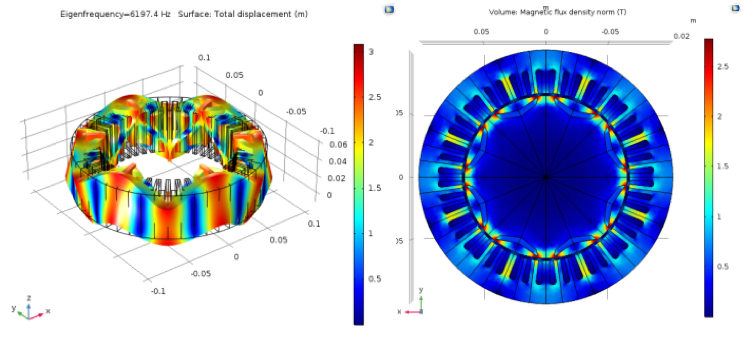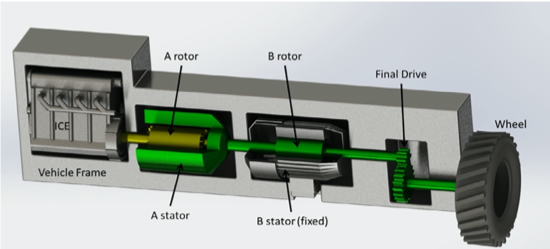Less is More: Intelligent Power Systems with fewer Components

As car technology has evolved, it now requires more electrical power onboard. The power requirement is even greater for military operations that might include demanding weapon and communication systems in addition to propulsion. Autonomous vehicles also require large amounts of energy for onboard computing. The U.S. Army Ground Vehicle Systems Center understood this need and planned for a 45 kW electrical power system for vehicles in its 30-year plan. This system would be sufficient to generate enough energy to power advanced survival and weapons systems while adding to propulsion requirements.
“Military applications need a large amount of electricity for hybrid technology, but the energy on battlefield is limited,” said Bogdan Epureanu, Director of the Automotive Research Center and the Arthur F. Thurnau Professor of Mechanical Engineering at the University of Michigan. “Operational energy is essential, and if we can optimize the use of this energy or harvest energy from the environment, vehicles can stay in the field days, weeks, or much longer thanks to autonomous operation.”
Epureanu and his team have focused on a new hybrid solution. They are developing a new power architecture that improves fuel economy by combining electric power with traditional engines.

“A special and robust architecture is needed to be able to generate electrical power onboard vehicles and deploy it when and where it is needed, from communications, to onboard computers, to propulsion,” said Epureanu.
The team have created methods to optimize vehicle component size simultaneously with control parameters to maximize the performance of the power system. Their approach requires fewer components that increases reliability, because there are fewer components that can fail. This approach, however, is not without some shortcomings. A downsized engine creates more vibrations across the vehicle. The team have added vibration suppression as part of the vehicle design.
“This new architecture required new controllers that we designed and optimized [throughout the project],” said Epureanu. “We have also developed new methods to predict parametric resonances that could lead to undesirable vibrations to make sure that we are avoiding those in our designs.”

The team took their findings a step further. They envisioned ways to apply their technique to a platoon of vehicles, whether military vehicles in the field or transport trucks moving goods across the country. Like bicyclists drafting off the lead team member in the Tour de France, they are designing controllers that would modify the power split in the powertrain of each vehicle in the convoy to achieve optimal fuel performance.
According to Epureanu, his team has demonstrated the technology in simulations and data calibrated from experiments. Their results predict energy savings around 20%. This number is even higher if more vehicles are added to a platoon. They are now working on prototypes with the goal of widespread adoption by the military.
“This is one of the most comprehensive dynamic projects that I have worked on,” said Epureanu. “It goes from vibration within electric machines to whole vehicle models, to controls of multiple vehicles in platoons. It spans all of the size scales and combines all of these questions and problems into one vehicle design.”
Epureanu was joined by Heath Hofmann, Mohammad Khodabakhsh, and Chenyu Yi at UMich, Li Jiang, and Koji Shiono at Bosch, Xiao Guang Yang and Sungkwon Hong at Ford Motor Company, Dean Tomazic and Kiran Govindswamy, FEV, Grama Bhashyam, and Yong-Cheng Liu at Ansys, and Matthew Castanier and Denise Rizzo with the U.S. Army DEVCOM GVSC on the project titled “Novel Hybrid Electric Powertrains Enabled by Models of Electro-Magnetic-Structural Dynamics.”
Stacy W. Kish

